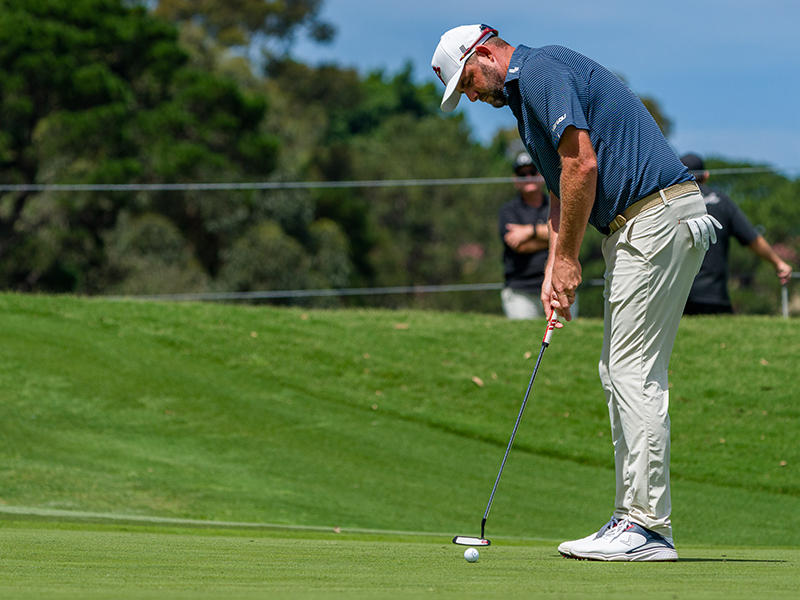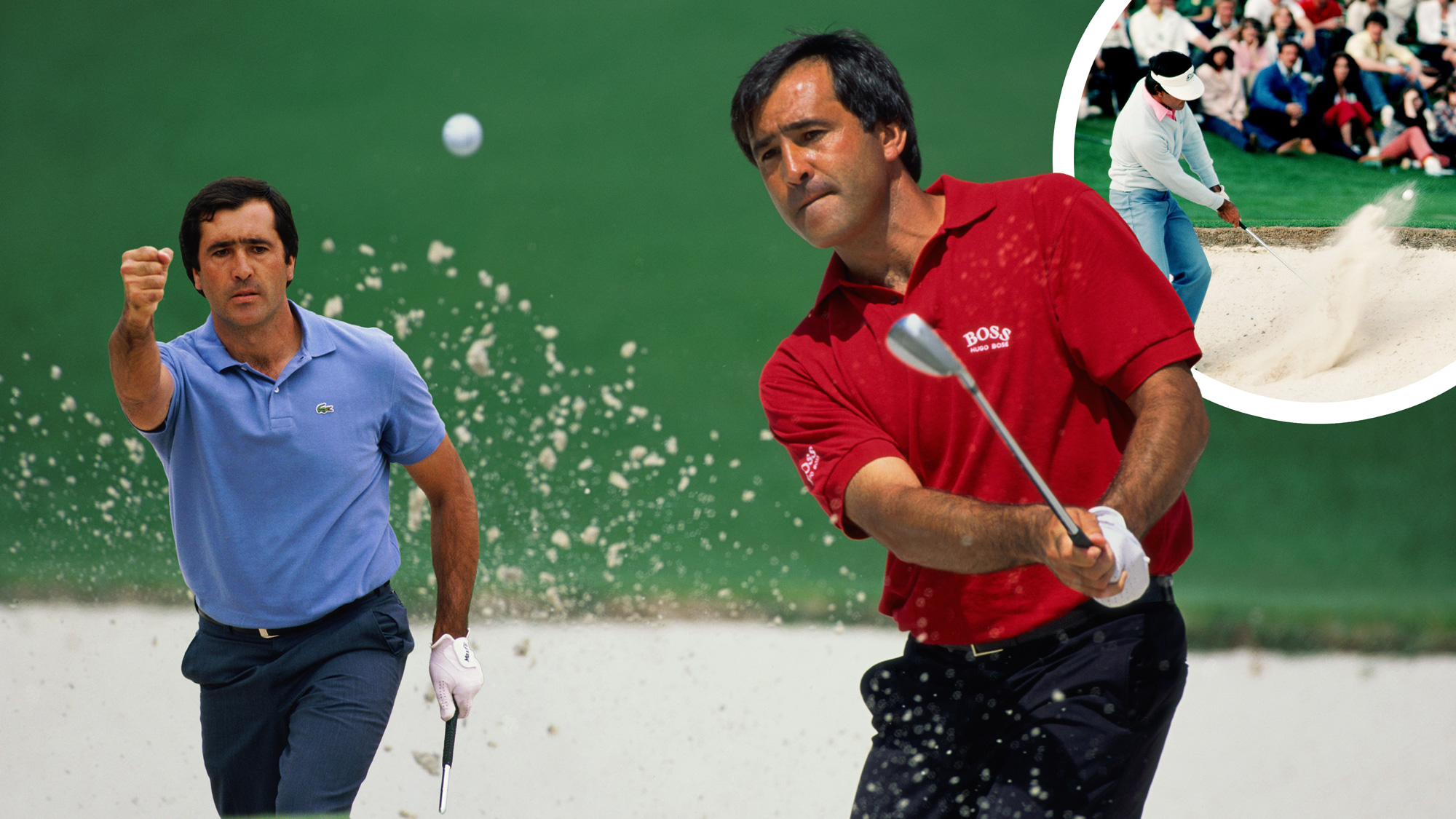6 Shrewd Steps To Becoming A More Consistent Golfer
These 6 shrewd steps, shared by a 13-time tour winner and LIV Golf professional, will help to make you more consistent on the golf course...


Most amateur golfers chase consistency on the golf course, as it leads to lower scores and a sharp reduction in a player's handicap index. The expert tips and drills we work on during a range session give us all the tools we need to achieve this, but producing our best stuff when it matters can be tricky.
The dependability of a tour pro's performance levels is one of the main things that keeps them at the top of the game, but it's also the thing that most sets them apart from the everyday amateur golfer. So, in the interest of closing that gap slightly, I searched through the extensive Golf Monthly archives and unearthed a real gem.
In this article, Marc Leishman, 13-time tour winner and member of recent LIV Golf Adelaide winners Ripper GC, shared six steps to help you become a more consistent golfer...
1. Driving
Good golfers hit the majority of their drives with the same shot shape. I’ve actually come full circle with how I shape my tee shots. When I started playing golf as a young lad in Australia, I naturally had a left-to-right flight with my driver.
However, in order to gain some distance to compete with the elite juniors that came out of my home state of Victoria, I spent some agonising months rebuilding my swing to produce loopy draws.
However, when I played on the PGA Tour, I went back to fading the ball with driver in hand. It was my stock shot, the shape I felt most comfortable with to get the ball in play. Amateurs should pick their shot shape based on body type and personal swing characteristics, then practise being able to call on that shot on every tee box. You’ll find more fairways and have easier second shots even after poor drives.

2. Iron Play
You’ll rarely come across a good player who swings out of their shoes on iron shots. Their action is always silky smooth, and usually they’re swinging at 85 per cent with a longer iron. That’s because they know the most vital aspect of iron play is staying balanced. You need balance to determine your low point at impact and then be able to repeat it.
Get the Golf Monthly Newsletter
Subscribe to the Golf Monthly newsletter to stay up to date with all the latest tour news, equipment news, reviews, head-to-heads and buyer’s guides from our team of experienced experts.
Once you’ve mastered balance, focus on grooving solid contact by compressing your irons. You won’t develop a consistent ball flight and distance with each iron until you start taking a divot after the ball. The biggest key to ensuring a ball-first strike is backswing length. A long swing can be detrimental as the club will release past the hands too early and you’ll likely scoop the ball. Swing to just before parallel on iron shots and you’ll hit down on the ball.
3. Wedge Play
A good golfer can always adjust to a chip or pitch shot based on the lie and also the direction of the grass (the grain) where their ball is resting. You can be a good wedge player with a sound technique from standard lies but if you can’t adapt to different lies and grasses then you’ll struggle on the course.
Usually before an event, I try to spend time chipping and pitching around the greens at that course to familiarise myself with the type of grasses and their grain. It will determine how high or low shots will fly, and what they’re going to do when they bounce.
If you’re chipping against the grain, which is more difficult than with it, you want to keep the hands above the ball, not in front of it, and have your weight evenly distributed through your stance.

4. Strategy
Good players lick their lips when it’s windy, because they know many of their competitors will struggle. I grew up in a coastal town called Warrnambool in Victoria, where you had to learn to play in the wind and enjoy it as there was rarely a day when it wasn’t blowing a gale on the course!
There are two signs of a good wind player. The first is playing the ball back in the stance as that improves your chances of ball-first contact, while also helping to keep the ball under the wind.
The second is avoiding the temptation to let your ball ride the wind. Always hit your ball against the wind, because you can control your ball when it hits the ground, and that is the most unpredictable aspect of golf in these conditions. Calculating distance in the wind is also a great skill for amateur golfers to have.
5. Putting
Putting is one of the most analysed parts of the game from a technical perspective, and rightly so. But I’m not sure if enough emphasis is placed on hitting the centre of the putter face, and that, to me, is the signature of a good putter.
You can practise your speed, or reading of greens, all you want. But unless you strike it in the middle of the face, you’ll struggle to consistently get the ball close or sink putts.
If I’m ever struggling with my putting, I’ll pick a dead-straight and flat part of a practice putting green and hit putts of about ten feet over and over again. I’ll concentrate on hitting the middle of the face, hearing that sound and seeing the ball go in the hole – that really builds confidence and confidence breeds good putting.
If you’re not feeling good over the ball, generally you’re going to putt poorly. If you are confident, you’re not thinking about missing. That’s when I putt my best.

6. Mind Games
A consistent golfer can always recognise the point in a round where they need to play ‘conservative aggressive’. When I won the 2017 BMW Championship, I teed off on Sunday five shots ahead, with players like Rickie Fowler and Justin Rose chasing.
I was a little less aggressive than in the first three rounds, just trying to give myself chances. I thought if I kept trying to make birdies without doing anything stupid, hopefully it would be enough to hold them off, and I managed to do it.
For amateurs, especially when you’ve got a good round going, there might be a stretch of holes on the course that are notoriously difficult. This is where you need to think through tee shot options that make bogey your worst-case scenario, while also keeping birdies and pars on the table.
It might be a 3-wood or driving iron instead of driver. From there, aim for the middle of the greens and pick shot shapes that, if struck less than perfectly, miss on the side where saving par is easier.
Want To Read More Expert Golf Tips?
The Golf Monthly archive is a gold mine of brilliant reads, documenting a journey through the history of golf dating back to our first issue in 1911. Take advantage of over 100 years of invaluable tips from the best tour professionals and coaches in world golf, by subscribing to the online Golf Monthly Archive.
Evin was a freelance writer for Golf Monthly in 2020.
-
 Bill Coore And Ben Crenshaw To Design New Course At Pinehurst Resort
Bill Coore And Ben Crenshaw To Design New Course At Pinehurst ResortBill Coore and Ben Crenshaw are designing a new course for Pinehurst Resort
By Mike Hall
-
 Amateur Legend Jay Sigel Dies Aged 81
Amateur Legend Jay Sigel Dies Aged 81The USGA has announced the American has passed away at the age of 81 from pancreatic cancer
By Mike Hall
-
 Sandy Lyle Shared 3 Top Tips With Us Prior To Winning The Masters in 1988... And They Could Still Save You Shots 37 Years Later
Sandy Lyle Shared 3 Top Tips With Us Prior To Winning The Masters in 1988... And They Could Still Save You Shots 37 Years LaterThe 1988 Masters Champion shared his expert tips in the January 1988 issue of Golf Monthly, but they are still absolute gems for amateur golfers to this day...
By Barry Plummer
-
 Are You More Accurate Than The Average Amateur Golfer? Peter Finch Can Help You Hit More Fairways In 2025
Are You More Accurate Than The Average Amateur Golfer? Peter Finch Can Help You Hit More Fairways In 2025There is no better feeling than striping one down the middle of the fairway, but many amateurs struggle with accuracy. Peter Finch has four pro tips to help...
By Barry Plummer
-
 Are You A Victim Of This Destructive Golf Swing Fault? Let Me Help You Fix It Before You Tee It Up This Weekend
Are You A Victim Of This Destructive Golf Swing Fault? Let Me Help You Fix It Before You Tee It Up This WeekendAn overswing in golf is a destructive habit which can cost us precious shots on the golf course, but PGA Pro John Jacobs has a quick fix to get us game ready...
By Barry Plummer
-
 Do You Struggle With Distance Off The Tee? Try This Quick Fix To Make 2025 Your Biggest Golf Season Yet
Do You Struggle With Distance Off The Tee? Try This Quick Fix To Make 2025 Your Biggest Golf Season YetStruggling with distance off the tee could be a major reason why your handicap isn't coming down or your scores aren't improving, but our quick fix can help...
By Barry Plummer
-
 Seve's 'Lost' Bunker Lesson: Master Slopes And Transform Your Short Game Today
Seve's 'Lost' Bunker Lesson: Master Slopes And Transform Your Short Game TodaySeve's forgotten bunker lesson, from Golf Monthly's August 1983 issue, could hold the secret to better bunker play and supercharging your short game this season
By Barry Plummer
-
 Is Your Golf Swing Failing You? This All-Encompassing Drill Can Instantly Save It
Is Your Golf Swing Failing You? This All-Encompassing Drill Can Instantly Save ItAre you struggling with your golf swing? Discover the all-encompassing drill that can fix common swing faults and restore your game. Get back on track today!
By Tom Motley
-
 I Attended An Exclusive Tee To Green Masterclass With A Top Golf Coach... Now I'm Sharing His 6 Transformative Tips With You
I Attended An Exclusive Tee To Green Masterclass With A Top Golf Coach... Now I'm Sharing His 6 Transformative Tips With YouFew golfers get the chance to spend an entire day with a top golf coach, which is why I can't keep his six expert tips to myself. Get ready to play better golf!
By Barry Plummer
-
 5 Things The Biggest Hitters Do To Generate Power In Their Golf Swing (And How You Can Copy Them)
5 Things The Biggest Hitters Do To Generate Power In Their Golf Swing (And How You Can Copy Them)Generating more power is a great way to improve your handicap and shoot lower scores. So, we analysed the biggest hitters in golf to help you hit it further...
By Barry Plummer